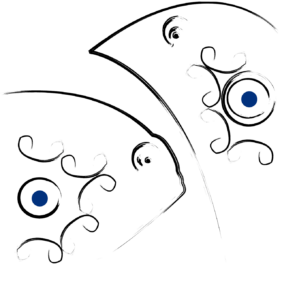Grotta di Fumane and the origin of art in Italy
Cave art appears fully mature since its earliest manifestation. At Chauvet as well as in other caves in Western Europe, large panels with representation of felines, horses, deers and pachyderms of the Ice Age (mammoths and wholly rhinos) were drawn on the walls and enlightened with torches to create suggestive games of shadows and lights. Besides the famous polychrome paintings of Lascaux and Altamira caves, repeatedly admired and cited by Pablo Ruiz Picasso, the earliest art is also characterized by stylized traits, marks, engravings and the renowned theriantropies, human figures with animal appearance, which are preserved in several sites. Over time, scores, geometric engravings, iconic representations completely substituted the figurative animalistic art and accompanied Homo sapiens until 14 thousands years ago. Yet, caves, rockshelters and rocks, often with difficult access, continue to be chosen for ritual practices. Typology and location of these places might have affected the nature and function of artistic performances, and provide clues about their origin. Thus, during the Late Palaeolithic, in various places and for several millennia different forms of art were present, such as paintings, reliefs, engravings made by percussion or incision, but also portable objects like ivory sculptures, parures, decorated artefacts and even musical instruments with specific styles and geographic distribution.
The limestones plates painted with red ochre discovered at Grotta di Fumane in Valpolicella (in the Natural Park of the Lessinia region) are among the oldest pictorial expressions in the Old World. After being frequented by the Neanderthals for thousands of years, this important cave was occupied by the earliest modern Sapiens coming from Africa. A large south facing arched vault sheltered the entrance, leaving one hundred square meters available for daily-life activities: designing fireplaces, butchering game, cooking food, working stone and bone as well as many other subsistence tasks and symbolic expressions. The position of the cave was also key for exploiting different hunting environments: the alpine grassland of the Lessini plateau peopled by ibex and chamois, the woodlands on the hills inhabited by red and roe deers as well as the wet environments on the alluvial plain where foragers could hunt ducks or encounter bison herds. Those daily-life sounds, scents and sensations needed to be expressed on and through something….
One morning, at the beginning of 2000, Prof. Alberto Broglio annotated on his field diary: “…new findings show the use of colorants by modern humans who inhabited the cave: some small blocks of red and yellow ochre; two large mottles of sediments with spots of ochre…. traces of red color on some artifacts; few rock fragments detached from the vault or the cave walls due to freezing-thawing, more or less extensively colored in red…”. Reading these lines, one could imagine an artist workshop with mottled floor, open color jars, few partially painted stones around and paintings on the walls ready to be adjusted.
The findings exposed and presented in VR60768 are selected from a group of stones with defined motives.
Stone with anthropomorphic representation (Stocktaking IG VR60768)
This painted stone inspired this project and is, to date, one of the oldest anthropomorphic representations known. The painted surface is irregular and characterized by smoothed edges and uneven reliefs. A thin layer of whitish concretion almost covers the whole surface. The color overlaps this concretion although it was also applied directly on the gray rock. The anthropomorphic drawing is represented frontally. The body axis from the neck to the groin was drawn on a small ridge of the stone whereas the lower limbs open wide around a concavity with arched profile. Two asymmetric lateral prominences are located at to the belly button. Lowermost, at the stomach, the body widens. On one side and under the lower limb, a colored area can be noticed. Two symmetric prominences directed outwards were interpreted as horns and, perhaps, the whole assemblage could be read as a mask. Under the neck, two symmetric traits perpendicular to the body main axis represent the upper limbs. The latter ones finish with two shorter traits turned downwards and likely representing the hands. An object constituted of an upper and a lower part and resembling the Saint Andrew ’s cross, hangs from the right hand and was interpreted as a ritual artefact.
Stone with animal representation (Stocktaking IGVR60769)
This stone shows an animal viewed on the side, drawn with red color. The figure occupies almost the whole surface of the stone, which has a sinuous profile. The pigment lays directly on the stone although, in some parts, it covers a veil of whitish concretion. In correspondence of the head and the stomach, the drawing ends on old fractures of the stones. The animal has four limbs, slender body, long neck, small head and tail. Two forelegs and one posterior leg are clearly visible while the second posterior leg was probably flaked away. The drawing outlines a mustelid, a mammal found in the same archaeological levels of the depicted stones.
The presence of more painted stones cannot be excluded and it is possible that further research in the rear of Grotta di Fumane will yield new and unexpected discoveries, thus providing new elements for correlations with the modern cave art.
Matteo Romandini |
Professor of Physical Anthropology and Taphonomy |
University of di Padova |




